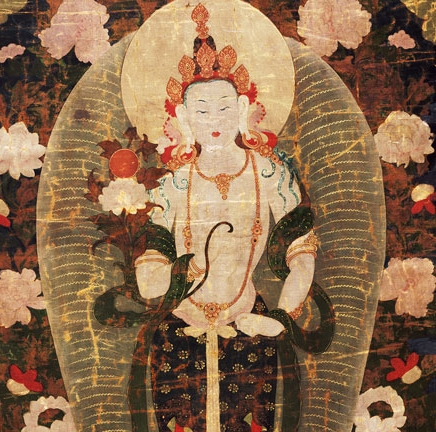
In honor of New York’s Spring Fashion Week 2016, we’re putting the spotlight on objects from our galleries that feature sumptuous fabrics, intricate detail, and rich jewels. Fashion Week may be nearly over, but these timeless styles are still on view. Keep an eye out for them next time you’re visiting the Rubin.
“Nomad girl” from Steve McCurry: India
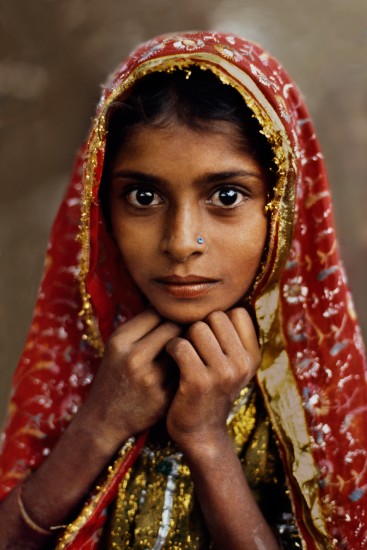
The exhibition Steve McCurry: India is filled with vivid colors and vibrant textures. In this image of a young girl, McCurry captures the exquisite details of her red scarf. Often these garments are decorated with zardosi (metallic embroidery) and gota (metallic ribbons). The girl also has a eye-catching nose piercing on her left nostril. Traditionally, the location of a nose piercing can reveal the wearer’s geographical region and cultural background; in this case, it is likely that the young girl is from Northern India.
Jambhala
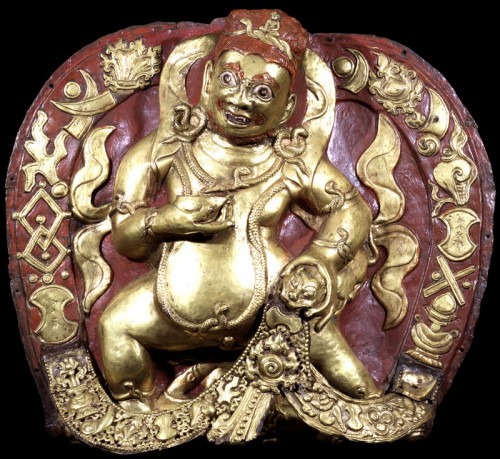
Jambhala, a wealth deity, is depicted here wearing “avant-garde jewelry.” His ears, neck, arms, wrists, ankles, and head are adorned with nagas, serpent spirits of the underworld. Atop his naga crown sits a figure of the Buddha, identified by his earth-touching gesture. Jambhala can be found strutting his stuff in the Spiral Lobby.
Bodhisattva Suryabaskara
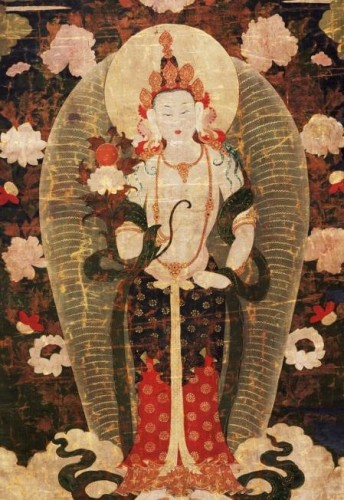
Suryabaskara, an attendant to the Medicine Buddha, wears an ankle-length skirt of embroidered multicolored fabric and tied with a white sash. What makes this Bodhisattva stand out are his lavish adornments: a golden crown inlaid with jewels, long dangling earrings, two necklaces, many bracelets and anklets, and a silky, flowing green scarf. Suryabaskara is currently striking a pose in our Gateway to Himalayan Art exhibition.
Virupaksha, the Guardian King of the West China
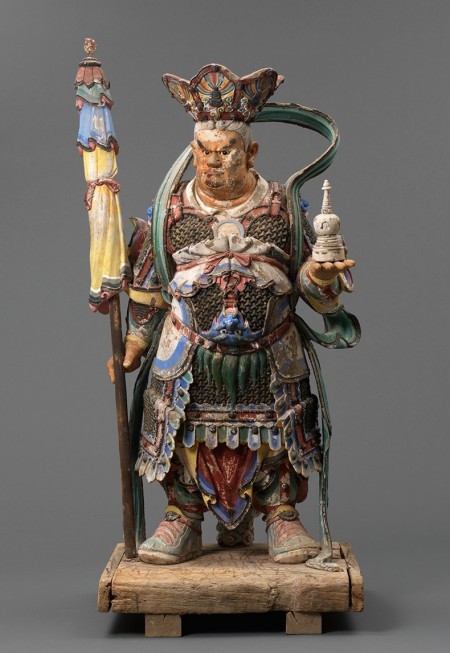
Virupaksha is one of the four Guardian Kings protecting the sacred Mount Sumeru, the mythical and idealized center of the world in Buddhist and Hindu tradition. Here, he stands strong with his armor and well-insulated boots, protecting him from the fierce wind as his silken sash whips behind him. Stylish and practical, Virupaksha would make a great New Yorker. Visit Virupaksha in our newly re-opened Masterworks exhibition!
Ushnishavijaya
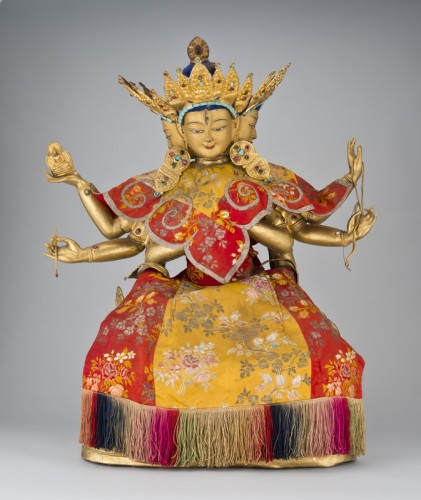
Ushnishavijaya is one of the three Buddhist deities associated with longevity (along with the Buddha Amitayus and White Tara). Dressing a Buddhist deity is a sign of honor and respect and in our Tibetan Buddhist Shrine Room, Ushnishavijaya is adorned with a red and yellow embroidered silk garment, trimmed with tassels.
Spring Fashion Week may be coming to a close, but you can view all of these fabulous styles at the Rubin Museum. Plan a visit today.

